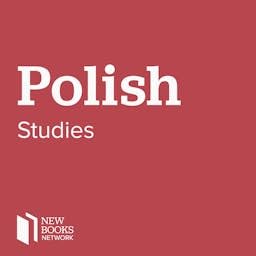Spies In My Blood: A Polish Family’s Secret Fight Against Nazis & Communists (Polestar-Media, 2025) is the true story of two brothers raised in New York by WWII exiles and their journey to Poland. Each takes a different path to infiltrate the Communist secret police on a mission to uncover the truth about their family of soldiers, spies, and assassins. Which brother would go into the family business?Alex Storozynski was the first in his family born in the United States, a new leaf on the family tree. When he set out to find his roots in Poland during the Cold War, his Mama stitched secret pockets into boxer shorts where he could hide his cash, passport, and important documents. Before he left to go behind the Iron Curtain, his mother warned him: “Be careful of your brother’s friends.” His big brother George, a banker, told him, “Mama doesn’t want you to go into the family business.”As an aspiring journalist, Storozynski interviewed Polish rock stars, filmmakers, and artists fighting censorship. He navigated the black market and learned to thrive in the surreal and repressive system. He persuaded the Communist government to give him a scholarship to write a doctoral dissertation about the most hated man in Poland, the military regime’s press spokesman, Jerzy Urban. But he asked too many questions.Storozynski attended Urban’s press conferences with American journalists and met underground Solidarity activists trying to overthrow the government. He translated interviews with opposition leaders like Lech Wałesa for The Philadelphia Inquirer and The Boston Globe.There’s a Polish saying, “You can’t fool your genes; it’s in your blood.” The Communist secret police (SB) stole Storozynski’s visa and interrogated him. When Senator Ted Kennedy arrived in Warsaw to give The Robert F. Kennedy Human Rights Award to Adam Michnik and the parents of martyred opposition priest Father Jerzy Popiełuszko, Storozynski spent time with the Kennedy clan and taught them to sing Sto Lat (May He Live 100 Years) to the opposition.The SB had enough. After investigating Alex Storozynski, they wrote: “The findings in the case show that he is familiar with the working methods of special services.” Storozynski was declared an “enemy of the state” and banned from Communist Poland.This is the true story of Alex Storozynski’s quest to uncover the nitty-gritty of three generations of spies in his blood.Winston Churchill’s words serve as a stark warning: “Those that fail to learn from history are doomed to repeat it.” With the Russian Army again trying to move the border between East and Western Europe, the dormant Cold War has reignited a hot war. Russia’s invasion of sovereign nations and killing of Ukrainians is a grim reminder of the need to avoid repeating history. Motorized terror squads are once again murdering Jews, and civilian bombing deaths are written off as collateral damage. The gravity of the situation cannot be overstated. Alex Storozynski is a Pulitzer Prize-winning journalist, award-winning author, filmmaker, songwriter, and President Emeritus & Chairman of the Board of The Kosciuszko Foundation.Stephen Satkiewicz is an independent scholar whose research areas are related to Civilizational Sciences, Social Complexity, Big History, Historical Sociology, military history, War studies, International Relations, Geopolitics, as well as Russian and East European history. Learn more about your ad choices. Visit megaphone.fm/adchoices
Show more
Show less
 Nov 24 20251 hr
Nov 24 20251 hr 41 mins
41 mins 40 mins
40 mins 1 hr and 25 mins
1 hr and 25 mins 43 mins
43 mins 47 mins
47 mins 1 hr and 12 mins
1 hr and 12 mins 49 mins
49 mins
